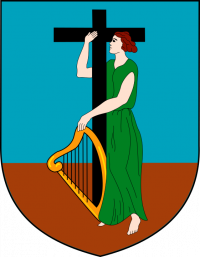Montserrat is a small but rich in history island in the Caribbean Sea. Its history begins long before the arrival of Europeans, when the Arawak and Carib Indian tribes lived here. In 1493, Christopher Columbus discovered the island during his second voyage to the New World, naming it after the Spanish monastery of Montserrat.
In 1632, the British colonized Montserrat, bringing with them many Irish. This influence is still felt today, so the island is sometimes called the “Emerald Isle of the Caribbean”. During the colonial period, Montserrat's economy was based on sugar plantations, where slaves from Africa worked. After the abolition of slavery in 1834, Montserrat continued to be a British colony.
In 1958, Montserrat became part of the Federation of the West Indies, but after its dissolution in 1962, it returned to direct British rule. Hurricane Hugo in 1989 caused significant damage to the island's infrastructure, but the real disaster occurred in 1995 when the Soufriere Hills volcano erupted. This led to the destruction of the island's capital, Plymouth, and forced many residents to relocate.
Today, Montserrat is a British overseas territory with its own government. After the volcanic eruption, most of the economic activity moved to the north of the island. The economy is based on tourism, financial services, and aid from the UK.
Montserrat retains a strong Irish cultural heritage, which is manifested in the celebration of St. Patrick's Day, which is an official holiday on the island.
The evolution of the Montserrat flag
As for the flag itself, it has not undergone any major changes. At the beginning of the colonial period, Montserrat used a standard British flag known as the Union Jack, which symbolized the island's affiliation with the British Empire. In the 19th century, many British colonies began to use flags of the Blue Ensign type, which consisted of a blue cloth with the Union Jack in the canton and the colony's coat of arms on the right side of the flag. The modern flag of Montserrat is a variant of the Blue Ensign, which includes the Union Jack in the upper left corner and the Montserrat coat of arms on the right side of the flag. The coat of arms consists of an image of Erin (the national personification of Ireland) in a green dress with a golden cross and a harp. The flag reflects Montserrat's autonomous status as a British Overseas Territory, emphasizing both British and Irish influences on the island's history and culture while retaining historical symbols.








